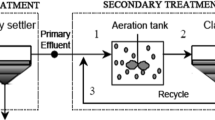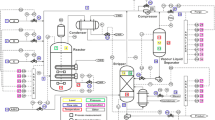Abstract
Ideally, when faults happen, the closed-loop system should be capable of maintaining its present operation. This leads to the recently studied area of fault-tolerant control (FTC). This paper addresses soft computing and signal processing based active FTC for benchmark process. Design of FTC has three levels: Level 1 comprises a traditional control loop with sensor and actuator interface and the controller. Level 2 comprises the functions of online fault detection and identification. Level 3 comprises the supervisor functionality. Online fault detection and identification has signal processing module, feature extraction module, feature cluster module and fault decision module. Wavelet analysis has been used for signal processing module. In the feature extraction module, feature vector of the sensor faults has been constructed using wavelet analysis, sliding window, absolute maximum value changing ratio and variance changing ratio as a statistical analysis. For the feature cluster module, the self-organizing map (SOM), which is a subtype of artificial neural network has been applied as a classifier of the feature vector. As a benchmark process three-tank system has been used. Control of the three-tank system is provided by fuzzy logic controller. Faults are applied to three level sensors. Sensor faults represent incorrect reading from the sensors that the system is equipped with. When a particular fault occurs in the system, a suitable control scheme has been selected on-line by supervisor functionality to maintain the closed-loop performance of the system. Active FTC has been achieved by switch mode control using fuzzy logic controller. Simulation results show that benchmark process has maintained acceptable performance with FTC for the sensor faults. As a result, when the system has sensor faults soft computing and signal processing based FTC helps for the best performance of the system.
















Similar content being viewed by others
References
Blanke M, Marcel S, Wu EN (2001) Concepts and methods in fault tolerant control. In: Proceedings of the American control conference, pp 2606–2620
Yu DL, Chang TK, Yu DW (2005) Fault tolerant control of multivariable process using auto-tuning PID controller. IEEE Trans Syst Man Cybern 35(1):32–43
Wang H, Wang Y (1999) Neural network-based fault tolerant control of unknown nonlinear systems. IEE Proc Control Theory Appl 146(5)
Niemann H (2000) Editorial. Int J Robust Nonlinear Control 10:1153–1154
Saberi A, Stoorvogel AA, Sannuti P, Niemann H (2000) Fundamental problems in fault detection and identification. Int J Robust Nonlinear Control 10:1209–1236
Jıang J (2003) http://www.ece.lsu.edu/mcu/lawss/presentations/JinJiang.pdf
Puig V, Quevedo J (2001) Fault tolerant PID controllers using a passive robust fault diagnosis approach. Control Eng Pract 9:1221–1234
Puig V, Quevedo J, Ocampo C (2005) Benchmark for fault-tolerant control based on Barcelona sewer network. In: 1st workshop on networked control system and fault tolerant control conference, France
Noura H, Sauter D, Hamelin F, Theilliol D (2000) Fault tolerant control in dynamic systems: application to a winding machine. IEEE Control Syst Mag 20:33–49
Patton RJ, Uppal FJ, Lopez-Toribio CJ. Soft computing approaches to fault diagnosis for dynamic systems: survey http://66.102.9.104/search?q=cache:fB8U-mhpELMJ:www.eng.hull.ac.uk/research/control/softcomp.ps+Soft+computing+approaches+to+fault+diagnosis+for+dynamic+systems:+survey&hl=tr&gl=tr&ct=clnk&cd = 1
Palma LB, Coito FV, Silva RN (2003) Fault diagnosis based on black-box models with application to a liquid-level system, emerging technologies and factory automation. In: Proceedings. ETFA ‘03. IEEE conference 2, pp 739–746
Postalcioglu S, Erkan K, Bolat E (2006) Discrete wavelet analysis based fault detection. Wseas Trans Syst 5(10):2391–2398
Maki Y, Loparo KA (1997) A neural-network approach to fault detection and diagnosis in industrial process. Control Syst Tech IEEE Trans 5(6):529–541
Xu Z (2002) Design of knowledge-based fault detection and identification for dynamical systems. Master of Science, University of Alberta
Madani K (1999) A survey of artificial neural networks based fault detection and fault diagnosis techniques. IJCNN ‘99 5:3442–3446
Kanev S (2004) Robust fault-tolerant control. Ph.D. thesis. University of Twente. The Netherlands
Postalcıoğlu S, Becerikli Y (2007) Wavelet networks for nonlinear system modeling. J Neural Comput Appl 16:433–441
Sharkey AJC, Chandroth GO, Sharkey NE (2000) A multi-net system for the fault diagnosis of a diesel engine. Neural Comput Appl 9:152–160
Postalcıoğlu S, Erkan K, Doğru Bolat E (2007) Intelligent sensor fault detection and identification for temperature control. In: Proceedings of the 11th WSEAS international conference on COMPUTERS, pp 131–134
Postalcıoğlu S, Erkan K, Doğru Bolat E (2007) Implementation of intelligent active fault tolerant control system, KES 2007. Lect notes Artif Intell 4692:804–812
Polikar R (2001) The Wavelet tutorial. http://engineering.rowan.edu/~polikar/WAVELETS
Polikar R (1999) The story of wavelets. IMACS/IEEE CSCC’99 Proceedings, pp 5481–5486
Author information
Authors and Affiliations
Corresponding author
Rights and permissions
About this article
Cite this article
Postalcıoğlu, S., Erkan, K. Soft computing and signal processing based active fault tolerant control for benchmark process. Neural Comput & Applic 18, 77–85 (2009). https://doi.org/10.1007/s00521-007-0159-x
Received:
Accepted:
Published:
Issue Date:
DOI: https://doi.org/10.1007/s00521-007-0159-x




